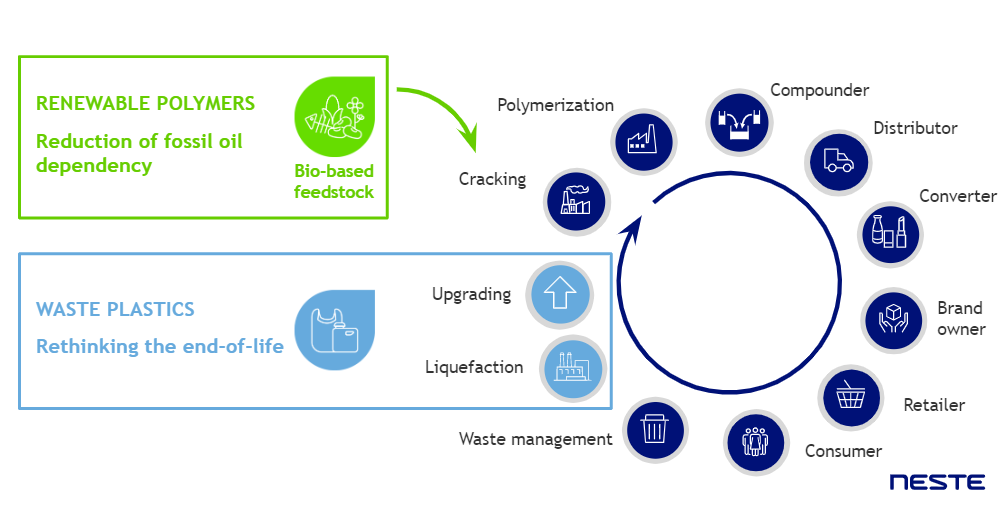Accelerating circularity: how to tackle the plastic waste challenge
While plastics consumption is expected to continue to increase, there is an urgent need to develop solutions to curb the increasing climate emissions while simultaneously tackling the global plastic waste challenge. Neste believes that accelerating the shift to a circular plastic economy provides solutions to both.
Neste has made a Plastics Pledge to boost the uptake of recycled and bio-based plastics in Europe. We are also actively engaged in supporting initiatives, such as the European Plastics Pact, to accelerate the shift to a circular plastics economy.

Neste has long been committed to contributing to a circular economy. We support the European and global efforts to accelerate transformation towards a more circular and resource-efficient plastic economy. Here are examples of Neste’s contributions:
- Wastes and residues as renewable raw materials
Neste produces a variety of renewable products, such as renewable hydrocarbons and propane for polymers and chemicals production, from 100% renewable raw materials. Currently, waste and residues account for 92% of Neste’s annual usage of renewable raw materials.
- Chemical recycling of plastic waste
Neste collaborates and engages in investment projects with several plastics value chain partners to develop chemical recycling technologies and capacity. This will help increase circularity of materials and can contribute to increasing plastic recycling rates. It helps reduce the need to direct these material streams to landfills and incineration, while also helping to prevent littering of the environment.
- Neste RE - renewable and recycled
Neste RE is a climate-friendlier waste and residue based feedstock to replace fossil feedstock in the production of new plastics. Neste RE consists 100% of renewable and recycled material.
- Recyclability
Materials produced with Neste RE are suitable for reuse and recycling after use similarly to traditional plastic.
Read more about how accelerating circularity helps combat plastic pollution.
